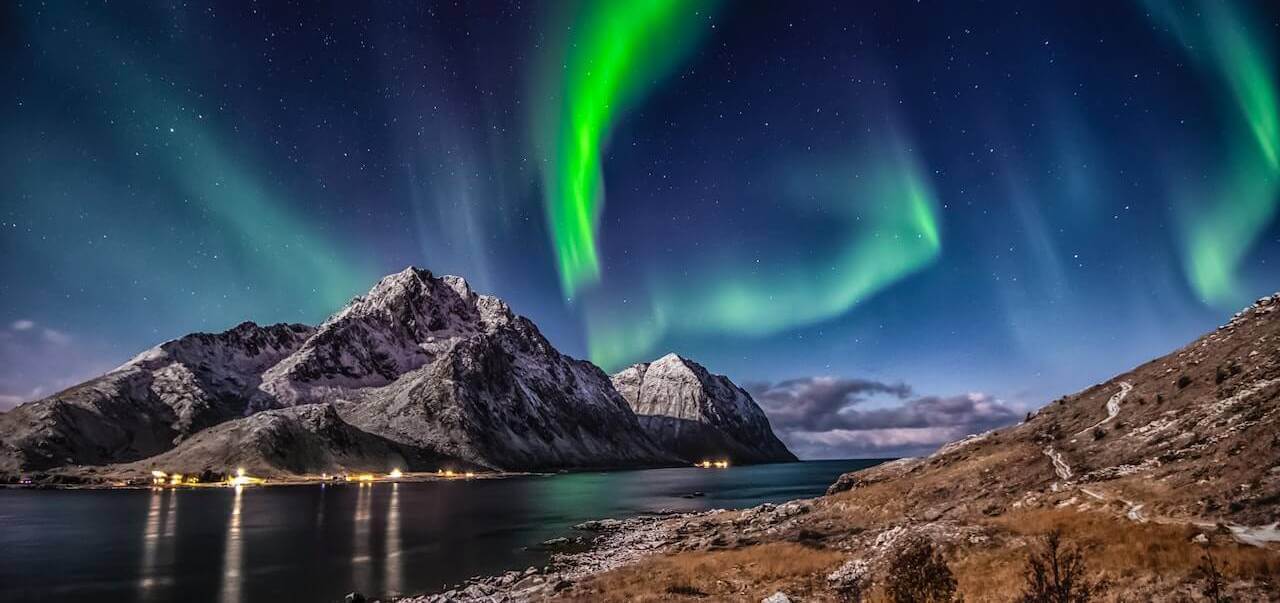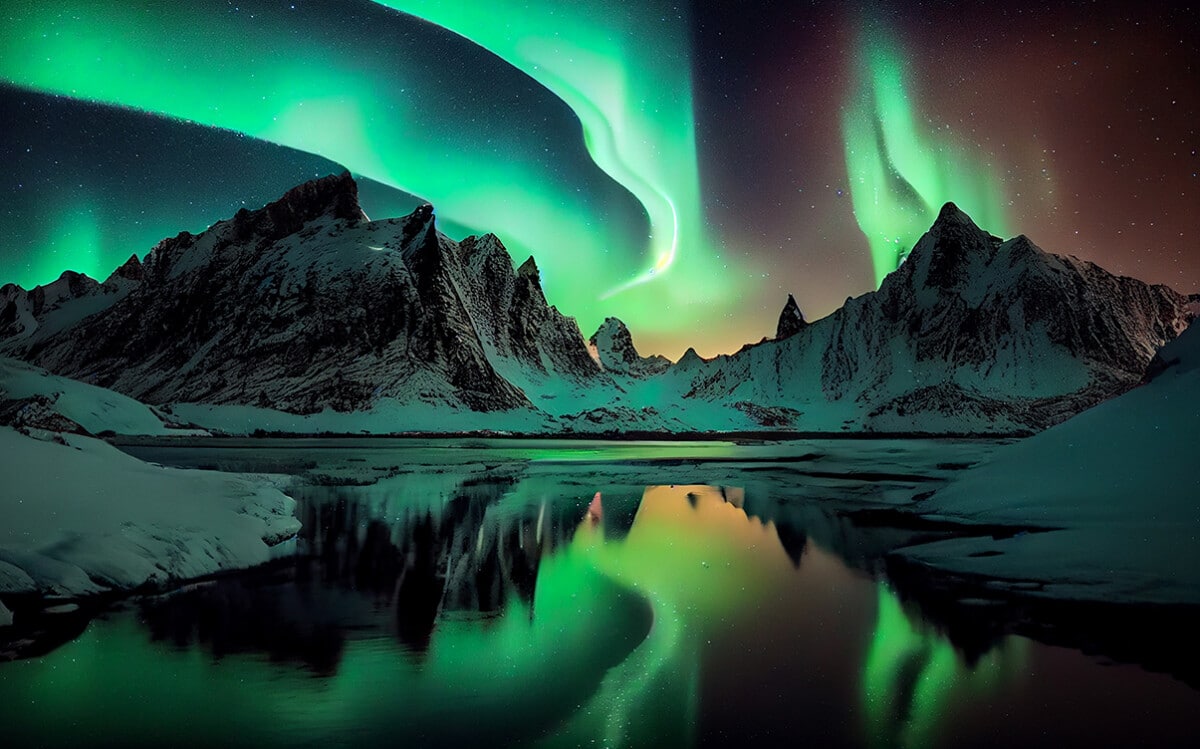Every year, thousands of travelers journey to the Arctic with one dream: to witness the ethereal dance of the Northern Lights. Iceland, with its wild landscapes, limited light pollution, and high latitude, is one of the best places in the world to experience this natural wonder. But discovering the Best Time to Visit Iceland for the Northern Lights isn’t just about picking a season—it’s about understanding weather conditions, tracking solar activity, and embracing a bit of luck.
In this complete guide, you’ll discover the best time to go, the science behind the aurora, the top viewing spots, and essential tips to make your trip successful—plus a detailed month-by-month breakdown to help you plan with confidence.
What Are the Northern Lights?

The Northern Lights, or Aurora Borealis, are caused by charged particles from the sun colliding with Earth’s atmosphere, exciting atoms and creating glowing ribbons of color across the sky. These can appear green, pink, purple, or red depending on the type of gas and the altitude of the reaction.
In Iceland, you’re close enough to the magnetic pole to catch frequent displays—especially during the darker months of the year.
When Is the Best Time to Visit Iceland for Northern Lights?
Prime Aurora Season: September to April
While the aurora can technically appear anytime it’s dark and skies are clear, your best bet is between September and April. During this period, Iceland experiences long, dark nights which are ideal for viewing.
The peak months are October through March, when the nights are longest and typically darkest.
Also Read: Hawaii’s Kilauea Volcano – Everything Your Need to Know
Month-by-Month Guide to Northern Lights in Iceland

To help you choose the perfect time for your trip, here’s a full breakdown of each month’s aurora potential, daylight hours, and weather expectations:
| Month | Daylight Hours | Aurora Activity | Weather Conditions | Notes |
| September | 13–15 hours | Moderate | Milder with occasional rain | Start of aurora season, fewer tourists |
| October | 9–11 hours | High | Cool with clear skies | Great time for a mix of light and dark |
| November | 6–8 hours | Very High | Colder, higher chance of snow | Increasingly dark, very high visibility |
| December | 4–6 hours | Very High | Very cold and snowy | Longest nights, festive season |
| January | 4–6 hours | High | Coldest time of year | Dark skies, icy conditions |
| February | 6–8 hours | High | Cold, with possible snowstorms | Slightly more daylight, still ideal viewing |
| March | 9–11 hours | High | Cold but stabilizing weather | Great balance of aurora and daytime tours |
| April | 13+ hours | Low to Moderate | Milder temperatures | Aurora season ends, but skies can still light up |
Also Read: Hawaii’s Kilauea Volcano – Everything Your Need to Know
Why 2025 Is a Special Year for the Northern Lights

If you’re planning a trip in 2025, you’re in for a treat. The year marks the solar maximum, which is the peak of the sun’s 11-year activity cycle. During this period, solar flares and sunspots increase, making aurora displays more frequent, intense, and far-reaching.
That means 2025 is expected to have some of the brightest, most frequent Northern Lights in over a decade.
Also Read: Hawaii’s Kilauea Volcano – Everything Your Need to Know
Where to See the Northern Lights in Iceland

While auroras can be visible from Reykjavik, your best chances lie in the remote countryside, where skies are darker. Here are some top spots:
- Thingvellir National Park: A UNESCO site just an hour from Reykjavik, perfect for dark skies and dramatic landscapes.
- Jökulsárlón Glacier Lagoon: Aurora reflections on floating icebergs make this location visually stunning.
- Kirkjufell Mountain: Often called “the most photographed mountain in Iceland,” it provides an iconic backdrop for aurora shots.
- Snaefellsnes Peninsula: Offers a variety of landscapes and very little light pollution.
- East and North Iceland: Fewer crowds, darker skies, and excellent visibility.
Also Read: Hawaii’s Kilauea Volcano – Everything Your Need to Know
How Weather Affects Northern Lights Viewing

Even if you travel during peak aurora months, you won’t see them without clear skies. Winter weather in Iceland can be unpredictable—clouds, storms, and snow can easily block your view. Here’s how to manage that:
- Check the aurora forecast daily
- Monitor local weather apps
- Be flexible with your plans
- Head east or inland to escape clouds
Self-Drive or Guided Tour? Pros and Cons
Self-Drive
- Pros: Complete freedom, go at your own pace, can chase clear skies
- Cons: Requires winter driving skills, remote locations, icy roads
Guided Tour
- Pros: Expert guides, transportation, warm gear, high success rates
- Cons: Fixed times and routes, may be canceled due to weather
Tip: First-timers often prefer tours, but adventurous travelers can benefit from renting a 4×4 and chasing the lights independently.
Also Read: Hawaii’s Kilauea Volcano – Everything Your Need to Know
Photography Tips for Capturing the Northern Lights

Want to bring home photos of the aurora? You’ll need a few things:
- Camera: DSLR or mirrorless with manual settings
- Tripod: For long exposures
- Settings:
- ISO: 800–3200
- Shutter speed: 5–25 seconds
- Aperture: f/2.8 or wider
- Manual Focus: Focus on a distant light or the stars
- Warm Batteries: Cold drains them fast—carry sparesAlso Read: Hawaii’s Kilauea Volcano – Everything Your Need to Know
What Else to Do in Iceland During Aurora Season
While chasing the lights is a top goal, there’s no shortage of other winter adventures in Iceland:
- Explore Ice Caves: Only accessible in winter—truly surreal
- Relax in Hot Springs: Try the Blue Lagoon or hidden geothermal pools
- Go Glacier Hiking: Safely trek across massive ice fields
- Take a Snowmobile Tour: A fast-paced way to explore remote landscapes
- See Frozen Waterfalls: Gullfoss, Seljalandsfoss, and Skógafoss look otherworldly in winter
Final Tips for Northern Lights Success
- Stay at least 5–7 nights: More nights = more chances
- Avoid full moons: They brighten the sky and reduce aurora visibility
- Get out of town: Even a 30-minute drive from Reykjavik can make a big difference
- Download an aurora alert app: Many provide real-time push notifications
- Don’t give up: Some people don’t see them until their last nightAlso Read: Hawaii’s Kilauea Volcano – Everything Your Need to Know
Conclusion: The Magic Awaits
Iceland is more than a travel destination—it’s a gateway to experiences that feel otherworldly. Seeing the Northern Lights in person is a moment that lives in your memory forever. Whether you choose to go in November’s deep darkness or March’s balanced beauty, the key to success lies in smart planning, patience, and wonder.
So, when is the best time to visit Iceland for the Northern Lights? The honest answer: when you’re most ready to chase them—armed with knowledge, wrapped in warm layers, and open to the unexpected glow of the Arctic sky.
